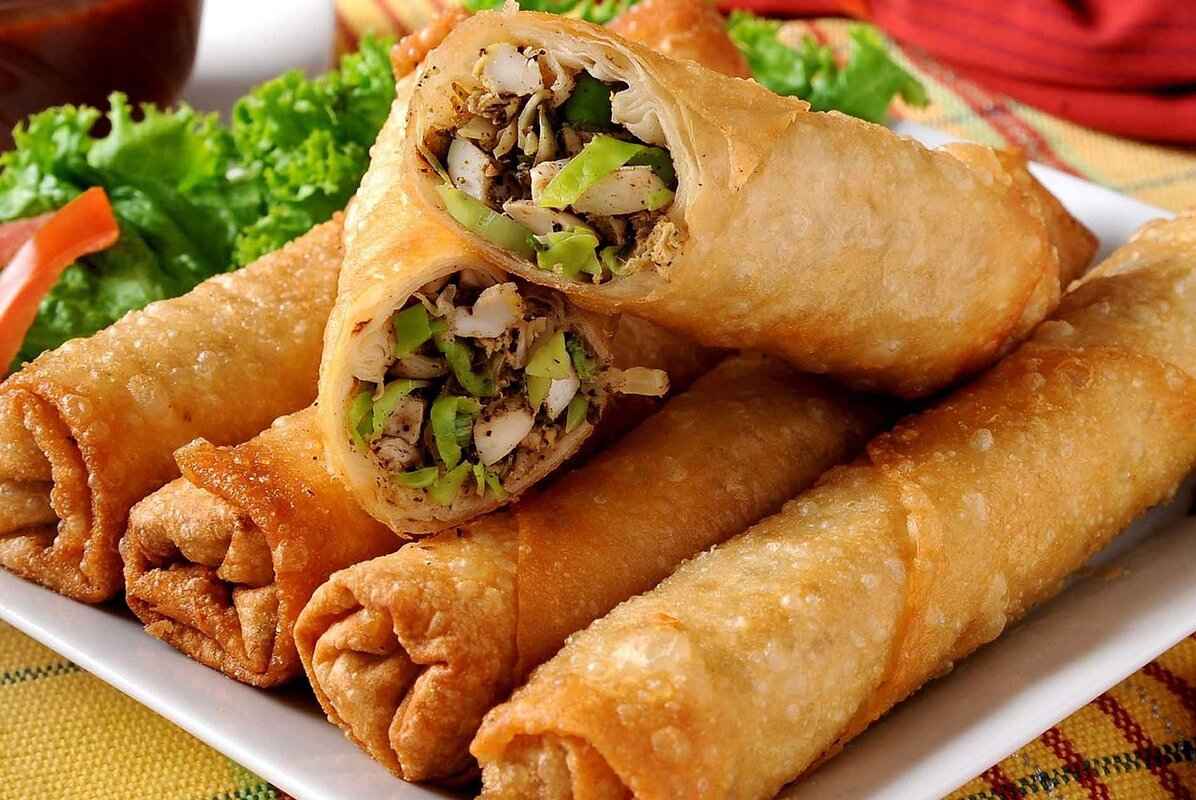The Chinese Winter Solstice, known as Dongzhi, is a festival steeped in rich traditions and cultural significance. Celebrated annually around December 21st or 22nd, it marks the longest night and the shortest day of the year. This event not only symbolizes the gradual return of longer daylight hours but also serves as a time for families to gather and celebrate the warmth of togetherness. Central to this celebration are the traditional foods that are prepared and enjoyed, each carrying profound meanings and historical backgrounds.
Dongzhi, which translates to “the extreme of winter,” is a significant event in the Chinese lunar calendar. It is believed that the festival originated over 2,000 years ago, with roots in ancient agricultural practices. The celebration revolves around the idea of balance and harmony, emphasizing the importance of family unity and the cyclical nature of life. During this time, families come together to honor their ancestors and share meals, reinforcing familial bonds.
During Dongzhi, specific foods are prepared that reflect the cultural heritage and values of the Chinese people. These dishes not only satisfy hunger but also embody wishes for health, prosperity, and happiness.
Tangyuan, or glutinous rice balls, are a quintessential dish during Dongzhi. Their round shape symbolizes family unity and togetherness, making them a staple at family gatherings. Traditionally, these sweet or savory balls are filled with various ingredients, each carrying its own significance.
- Black Sesame Paste: Represents wealth and prosperity.
- Red Bean Paste: Symbolizes happiness and good fortune.
These fillings not only enhance the flavor but also connect the dish to the hopes and dreams of the family members who share them.
The preparation of Tangyuan is a cherished family activity. The process involves mixing glutinous rice flour with water, forming small balls, and boiling them. This hands-on experience fosters a sense of community and strengthens family ties.
Dumplings, or jiaozi, are another beloved food during Dongzhi. Their shape resembles ancient Chinese gold ingots, symbolizing wealth and prosperity. Families often gather to make dumplings together, which enhances the festive atmosphere and promotes unity.
Consuming dumplings during Dongzhi is believed to bring good fortune for the upcoming year. The act of making and sharing dumplings embodies the spirit of cooperation and familial love, making them a vital part of the celebration.
China’s vast geography and diverse cultures lead to different regional interpretations of Dongzhi foods. These variations highlight local customs and agricultural practices, enriching the celebration.
In southern China, glutinous rice balls dominate the festivities, while northern regions prefer dumplings. This regional divide not only showcases culinary diversity but also reflects the unique cultural identities within China.
Various locales may feature their own specialties for Dongzhi, such as special soups or rice cakes. These unique dishes contribute to the festive spirit and strengthen community ties through shared culinary practices.
The foods consumed during Dongzhi are not only culturally significant but also provide various health benefits, reflecting the wisdom of traditional Chinese dietary practices.
Tangyuan is made from glutinous rice, which is energy-dense and easy to digest. The fillings often contain nutritious ingredients, contributing to a balanced diet during the winter months.
Dumplings are typically filled with meat and vegetables, offering essential proteins and vitamins. Their warm, hearty nature makes them ideal for the cold winter season, promoting overall health and well-being.
As society evolves, so do the interpretations of traditional Dongzhi foods. Modern chefs and home cooks experiment with flavors and presentations, blending tradition with innovation.
Contemporary culinary trends have led to fusion recipes that incorporate international flavors into traditional Dongzhi dishes, appealing to younger generations and expanding the festival’s reach.
Despite modern adaptations, many families still prioritize traditional recipes during Dongzhi, ensuring that cultural heritage is preserved while allowing for creativity and personal expression in the kitchen.
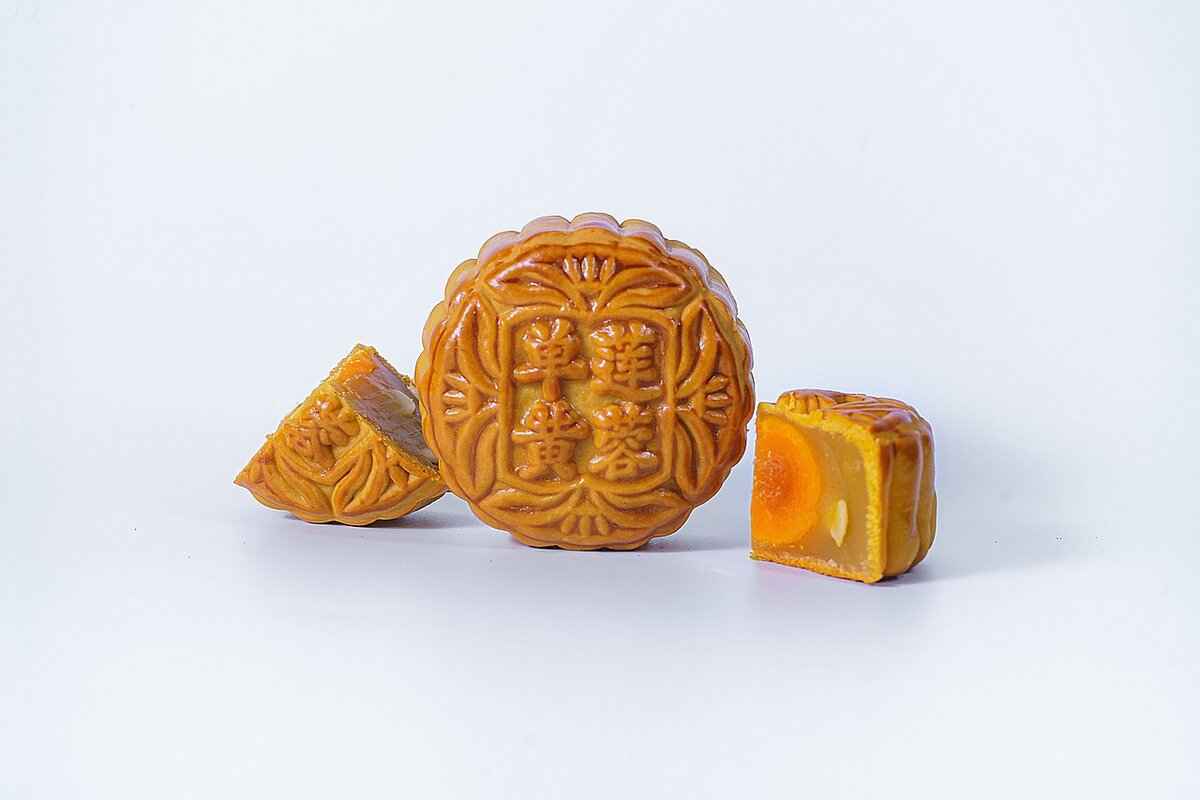
What is Dongzhi and Why is it Celebrated?
Dongzhi, also known as the Winter Solstice Festival, is one of the most significant celebrations in Chinese culture. This festival occurs around December 21st or 22nd each year, marking the shortest day and the longest night of the year. It is a time of reflection, family gatherings, and the anticipation of longer days ahead. The celebration of Dongzhi is deeply rooted in the concept of yin and yang, representing the balance between darkness and light.
Traditionally, Dongzhi signifies the return of yang energy, which is associated with warmth and growth. As the days begin to lengthen, families come together to celebrate the promise of spring and renewal. This festival is also an opportunity for people to honor their ancestors, reflecting on the past while looking forward to the future.
The importance of Dongzhi extends beyond its astronomical significance. It is a time for families to gather and strengthen their bonds. During this festival, many Chinese people engage in traditional rituals and prepare special foods that symbolize unity and prosperity. These practices serve to reinforce cultural identity and foster a sense of belonging among community members.
One of the core beliefs surrounding Dongzhi is that the foods consumed during this time carry significant meanings. For instance, the act of making and sharing food during the festival symbolizes abundance and the importance of family unity. The festival also encourages gratitude and reflection, allowing individuals to express appreciation for their loved ones and the blessings in their lives.
During Dongzhi, specific foods are prepared that hold deep cultural significance. The most popular dishes include:
- Glutinous Rice Balls (Tangyuan) – These round rice balls symbolize family unity and togetherness.
- Dumplings (Jiaozi) – Their shape resembles ancient Chinese currency, symbolizing prosperity and wealth.
- Special Soups – Often made with seasonal ingredients, these soups represent nourishment and warmth.
Tangyuan, or glutinous rice balls, are a must-have during Dongzhi. Their round shape signifies completeness and family unity. Traditionally, families gather to make Tangyuan together, reinforcing familial bonds and creating lasting memories. These rice balls can be filled with various ingredients, such as sweet black sesame paste or red bean paste, each carrying its own cultural meaning.
Dumplings, or jiaozi, are another staple of the Dongzhi celebration. Their shape is reminiscent of ancient Chinese gold and silver ingots, symbolizing wealth and prosperity. Eating dumplings during this festival is believed to bring good fortune for the upcoming year. Families often gather to prepare and enjoy dumplings, creating a sense of community and shared purpose.
In addition to the traditional foods, Dongzhi celebrations vary across different regions of China. For instance, while southern regions may favor glutinous rice balls, northern areas often prefer dumplings. This regional diversity reflects local customs and agricultural practices, enriching the overall celebration of Dongzhi.
Some areas may also have unique local dishes that further enhance the festive spirit. These specialties connect communities through shared culinary traditions, highlighting the rich tapestry of Chinese culture.
The foods consumed during Dongzhi not only celebrate cultural heritage but also offer various health benefits. For example, Tangyuan is made from glutinous rice, providing energy and being easy to digest. Dumplings, filled with nutritious ingredients like meat and vegetables, offer essential proteins and vitamins, making them ideal for the cold winter months.
As society evolves, so do the interpretations of traditional Dongzhi foods. Modern chefs and home cooks are experimenting with new flavors and presentations, blending tradition with innovation while still preserving the essence of this cherished festival.
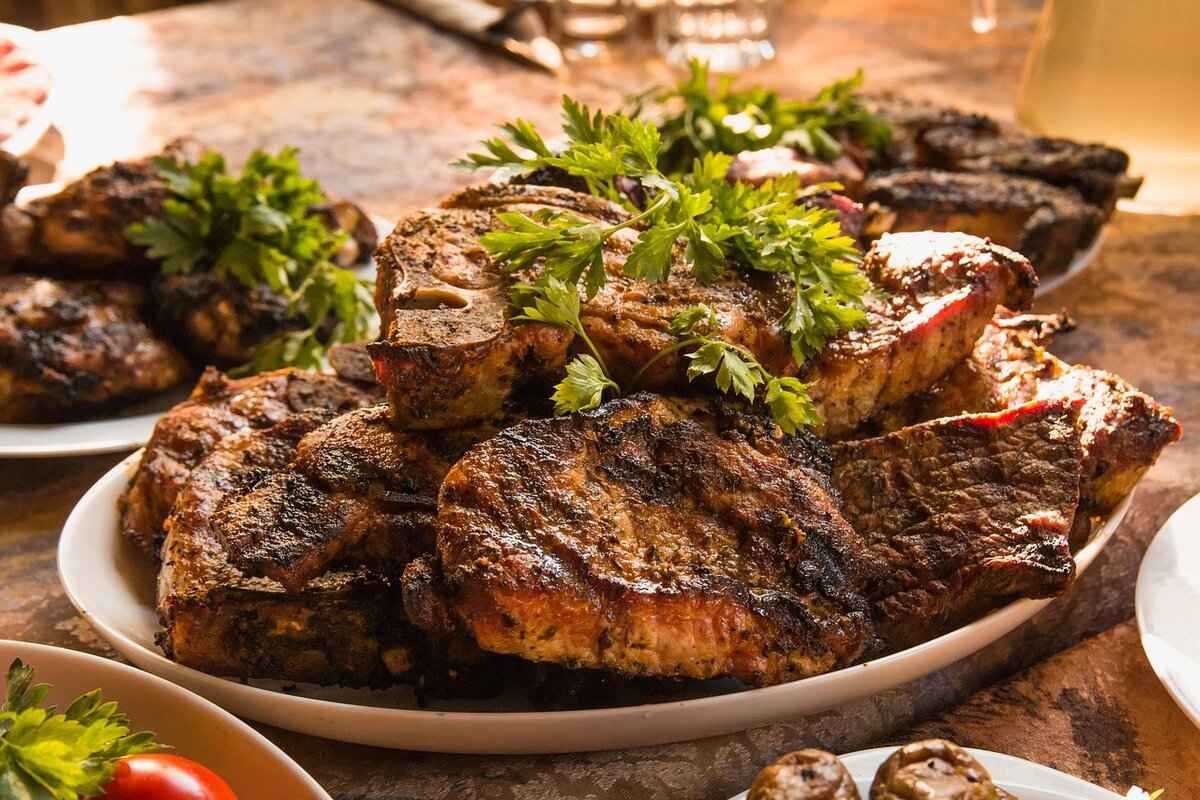
Traditional Foods Associated with Dongzhi
The Chinese Winter Solstice, known as Dongzhi, is a time of celebration that brings families together to honor traditions and enjoy special foods. Each dish prepared during this festival carries profound cultural significance, representing various aspects of life, health, and prosperity. This article delves into the traditional foods associated with Dongzhi, exploring their meanings and the joy they bring to family gatherings.
During Dongzhi, families prepare a variety of traditional foods, each with its own unique symbolism. The most popular dishes include:
- Glutinous Rice Balls (Tangyuan)
- Dumplings (Jiaozi)
- Special Soups and Stews
- Rice Cakes
Tangyuan, or glutinous rice balls, are a staple during Dongzhi. Their round shape symbolizes family unity and togetherness, making them essential for family gatherings. Traditionally, they are filled with sweet ingredients like black sesame paste or red bean paste, each carrying its own significance. The act of making Tangyuan is a cherished family activity, reinforcing bonds as everyone participates in the preparation process.
Dumplings, or jiaozi, are another beloved food during Dongzhi. Their shape resembles ancient Chinese gold or silver ingots, symbolizing wealth and prosperity. Eating dumplings is believed to bring good fortune in the coming year, making them a favorite among families. The preparation of dumplings often becomes a communal effort, with family members gathering to fill and shape the dumplings, strengthening familial ties.
Different regions in China have their own unique foods associated with Dongzhi, reflecting local customs and agricultural practices. For example:
- In southern China, families primarily enjoy glutinous rice balls.
- In northern regions, dumplings are more prevalent.
This regional divide showcases the rich culinary landscape of China and highlights the diversity of traditions celebrated during Dongzhi.
The foods consumed during Dongzhi not only celebrate cultural heritage but also offer various health benefits. For instance:
- Tangyuan provides energy and is easy to digest, making it a comforting choice during the cold winter months.
- Dumplings are typically filled with nutritious ingredients like meat and vegetables, offering essential proteins and vitamins that support overall health.
As society evolves, the interpretations of traditional Dongzhi foods are also changing. Modern chefs and home cooks are experimenting with new flavors and presentations, blending tradition with innovation. This has led to the creation of fusion recipes that incorporate international elements into traditional dishes, appealing to younger generations and expanding the festival’s reach.
Despite these modern adaptations, many families still prioritize traditional recipes during Dongzhi. This commitment ensures that cultural heritage is preserved while allowing for creativity and personal expression in the kitchen.
In conclusion, the foods associated with Dongzhi are more than just delicious meals; they are a celebration of family, culture, and the hope for prosperity in the year to come. Whether it’s through the roundness of Tangyuan or the shape of dumplings, each dish tells a story of togetherness and tradition.
Glutinous Rice Balls (Tangyuan)
hold a special place in the hearts of many during the Dongzhi Festival. These delightful treats, made from glutinous rice flour, are not just a culinary staple but also a symbol of family unity and togetherness. Their round shape represents completeness and harmony, making them an essential part of family gatherings during this festive time.
The preparation of Tangyuan is often a communal activity, where family members come together to create these delicious balls. The process begins with mixing glutinous rice flour and water to form a dough. This dough is then shaped into small balls, which can be filled with various sweet or savory fillings. The most common fillings include black sesame paste, red bean paste, and even peanut butter. Each filling carries its own significance, adding to the rich tapestry of flavors and meanings associated with this traditional dish.
During the Dongzhi Festival, the act of eating Tangyuan transcends mere sustenance. It serves as a ritual that reinforces familial bonds and traditions. Families gather around the table to share stories, laughter, and the warm, comforting taste of these rice balls. The act of sharing Tangyuan symbolizes the hope for a prosperous and harmonious year ahead, making it a must-have during the celebrations.
The significance of Tangyuan extends beyond their delicious taste. They embody the essence of reunion and familial love. In Chinese culture, the round shape of these rice balls is a powerful symbol of unity and completeness. It is believed that consuming Tangyuan during the Dongzhi Festival can bring families closer together, fostering a sense of belonging and emotional warmth.
While traditional Tangyuan is often sweet, filled with ingredients like black sesame or sweet red bean, there are also savory versions that include fillings such as minced meat and vegetables. This diversity reflects the rich culinary landscape of China, where regional variations can be found. For example, in some regions, Tangyuan may be served in a savory broth, showcasing the adaptability of this dish.
Making Tangyuan at home is a cherished tradition that many families look forward to during the Dongzhi Festival. The process is relatively simple and can be a fun activity for all ages. Here’s a basic recipe to get started:
Ingredients:- 2 cups glutinous rice flour- 1/2 cup water (adjust as needed)- Filling of choice (black sesame paste, red bean paste, etc.)Instructions:1. In a bowl, mix the glutinous rice flour with water until a smooth dough forms.2. Divide the dough into small pieces and flatten each piece.3. Place a small amount of filling in the center and wrap the dough around it, rolling it into a ball.4. Bring a pot of water to a boil and gently drop the rice balls in.5. Cook until they float to the surface, then let them simmer for a few more minutes.6. Serve warm, optionally in a sweet syrup or broth.
As you can see, making Tangyuan is not just about the end product but also about the memories created during the process. Families often enjoy this bonding time as much as the delicious results.
In summary, Tangyuan are more than just a festive food; they are a cultural symbol of unity and love. Their preparation and consumption during the Dongzhi Festival bring families together, reinforcing traditions and creating cherished memories. Whether sweet or savory, Tangyuan continues to play a vital role in celebrating the spirit of togetherness during this important occasion.
Sweet and Savory Variations of Tangyuan
Tangyuan, also known as glutinous rice balls, are a cherished delicacy in Chinese cuisine, particularly during the Winter Solstice Festival, or Dongzhi. These delightful treats are not only a symbol of family unity but also come in a variety of fillings, each with its own significance. The versatility of tangyuan highlights the rich tapestry of Chinese culinary traditions.
Tangyuan can be filled with a range of ingredients, showcasing the diversity of flavors and textures. The most popular fillings include:
- Black Sesame Paste: This filling is renowned for its rich, nutty flavor and is believed to symbolize wealth and prosperity.
- Red Bean Paste: Known for its sweetness, red bean paste represents happiness and good fortune.
- Peanut Paste: Creamy and slightly sweet, peanut paste is associated with family harmony.
- Matcha or Green Tea Paste: A modern twist, this filling offers a unique flavor and is often linked to health and vitality.
Each filling in tangyuan carries unique meanings that reflect the values and beliefs of Chinese culture. For instance, black sesame is often associated with the idea of wealth, making it a popular choice during celebrations where prosperity is wished for. Similarly, red bean paste, with its sweet flavor, is linked to happiness and good luck, making it a fitting choice for family gatherings.
Regional variations also play a significant role in the types of fillings used in tangyuan. In southern China, where the dish is more prevalent, you might find a wider array of sweet fillings, while northern regions may favor more savory options. This reflects local tastes and agricultural practices, adding layers of meaning to the dish.
Making tangyuan at home is a beloved tradition that brings families together. The process involves:
1. Mixing glutinous rice flour with water to form a dough.2. Creating small balls and filling them with chosen ingredients.3. Boiling the filled balls until they float, indicating they are cooked.
This hands-on experience not only strengthens family bonds but also allows for the sharing of stories and memories associated with the festival.
As culinary trends evolve, chefs and home cooks are experimenting with innovative fillings that blend traditional flavors with modern twists. For example, some might incorporate fruits or chocolate into their tangyuan, appealing to younger generations and reflecting a fusion of cultures.
Whether filled with traditional black sesame or modern matcha, tangyuan remains a beloved dish that embodies the spirit of togetherness during the Dongzhi Festival. Its diverse fillings not only satisfy the palate but also connect generations through shared culinary heritage.
How to Prepare Tangyuan
Preparing Tangyuan at home is not just a culinary task; it is a cherished tradition that brings families together, especially during the Chinese Winter Solstice celebration. The process of making these delightful glutinous rice balls is simple yet rewarding, allowing family members to bond over the joy of cooking.
To begin your Tangyuan-making journey, gather the following ingredients:
- Glutinous rice flour – 2 cups
- Water – 1 cup (adjust as necessary)
- Fillings – such as black sesame paste, red bean paste, or peanut butter
- Food coloring (optional) – for a colorful presentation
Follow these easy steps to create your own Tangyuan:
- Mix the Dough: In a large bowl, combine the glutinous rice flour with water. Stir until a dough forms. If you want colored Tangyuan, divide the dough and add a few drops of food coloring to each portion.
- Knead the Dough: Knead the dough for about 5-10 minutes until it is smooth and elastic. This step is crucial for achieving the right texture.
- Form the Balls: Pinch off small pieces of dough and flatten them in your palm. Place a small amount of your chosen filling in the center, then carefully fold the dough over the filling and roll it into a ball.
- Boil the Tangyuan: Bring a pot of water to a boil. Gently drop the Tangyuan into the boiling water. They are done when they float to the surface, which usually takes about 5-7 minutes.
- Serve: Remove the Tangyuan with a slotted spoon and serve them in a bowl with warm syrup or sweetened water for added flavor.
The act of making Tangyuan is imbued with cultural significance. The round shape of the balls symbolizes unity and togetherness within the family, making it a perfect dish for celebrations. As family members gather in the kitchen, they share stories, laughter, and memories, reinforcing their bonds.
While the classic version is delicious, you can also experiment with different fillings. Here are some popular options:
- Black sesame paste – rich in flavor and tradition
- Red bean paste – sweet and satisfying
- Peanut butter – a modern twist
- Fruit fillings – like mango or strawberry for a refreshing change
To ensure your Tangyuan turns out perfectly, consider the following tips:
- Consistency is Key: The dough should be soft but not sticky. Adjust the water as needed to achieve the right texture.
- Don’t Overfill: Use a small amount of filling to avoid bursting the dough while boiling.
- Keep Water Boiling: Make sure the water is at a rolling boil before adding the Tangyuan to cook them evenly.
In conclusion, making Tangyuan at home is a delightful way to celebrate family traditions while enjoying a delicious treat. By following these steps and tips, you can create not only a tasty dish but also lasting memories with your loved ones.
Dumplings (Jiaozi)
Dumplings, known as jiaozi in Mandarin, are an essential part of the Dongzhi Festival, celebrated during the Winter Solstice in China. These delightful morsels not only tantalize the taste buds but also hold deep cultural significance. Their unique shape, reminiscent of ancient Chinese gold or silver ingots, symbolizes wealth and prosperity, making them a favored dish among families during this festive season.
During Dongzhi, families come together to prepare and enjoy dumplings, reinforcing familial bonds and traditions. The act of making dumplings is often a communal activity, where family members gather to fill and fold the dough, creating a sense of unity and shared purpose. This practice not only strengthens relationships but also serves as a way to pass down culinary skills and heritage from one generation to the next.
The symbolism of dumplings extends beyond their shape. Eating dumplings during Dongzhi is believed to usher in good fortune and a prosperous year ahead. Families often eat dumplings on the eve of the Winter Solstice, with the hope that this act will bring them financial stability and happiness. This tradition is deeply rooted in Chinese culture, where food often carries profound meanings and auspicious connotations.
Making dumplings is a cherished tradition that varies by region and family. The basic ingredients include:
- Flour – typically all-purpose or wheat flour for the dough
- Water – to bind the flour into a smooth dough
- Fillings – commonly ground meat, vegetables, or a combination of both
The process begins with mixing flour and water to form a dough, which is then rolled into thin circles. The filling is placed in the center, and the edges are pinched together to seal them. Dumplings can be boiled, steamed, or pan-fried, each method offering a unique texture and flavor.
Dumplings can be filled with a variety of ingredients, each offering different tastes and cultural significance. Some popular fillings include:
- Pork and Cabbage – a classic combination that provides a savory flavor.
- Chicken and Mushroom – a lighter option that is equally delicious.
- Vegetable Medley – for those seeking a vegetarian alternative, filled with seasonal vegetables.
Each filling not only adds to the flavor but also reflects the diversity of regional ingredients and culinary practices across China.
Different regions in China have their own unique takes on dumplings. For instance, northern regions typically favor thicker dough and heartier fillings, whereas southern regions may opt for thinner wrappers and lighter ingredients. Some areas even have special dumpling varieties that are unique to local customs and celebrations.
Dumplings are not just a treat for the taste buds; they also offer various health benefits. The fillings often include nutritious ingredients such as:
- Lean meats – providing essential proteins
- Vegetables – rich in vitamins and minerals
Additionally, the warm nature of dumplings makes them an ideal comfort food during the cold winter months, promoting overall health and well-being.
As culinary trends evolve, so do the interpretations of traditional dumplings. Modern chefs are experimenting with innovative flavors and presentations, incorporating international ingredients and cooking techniques. This fusion of tradition and modernity is appealing to younger generations, ensuring that the practice of making and eating dumplings continues to thrive in contemporary society.
In essence, dumplings are much more than just a delicious food item; they are a symbol of family unity, cultural heritage, and the hope for a prosperous future. Whether enjoyed at home or in a festive gathering, jiaozi remains a beloved dish that encapsulates the spirit of the Dongzhi Festival.
The Cultural Significance of Eating Dumplings
Dumplings, known as jiaozi in Mandarin, hold a special place in Chinese culture, particularly during the Winter Solstice Festival, or Dongzhi. This traditional food is not just a culinary delight but also a symbol of wealth and prosperity. The unique shape of dumplings resembles ancient Chinese gold or silver ingots, making them a favored dish during celebrations.
Why Are Dumplings Important During Dongzhi?
Eating dumplings during Dongzhi is believed to bring good fortune for the coming year. This belief is deeply rooted in Chinese traditions, where food is often associated with wishes for a prosperous future. Families gather to prepare and consume dumplings together, reinforcing familial bonds and creating cherished memories. This act of cooking and sharing meals is a way to honor ancestors and express gratitude for the past year’s blessings.
How Are Dumplings Made? A Family Tradition
The process of making dumplings is a family affair. Families often come together to mix ingredients, roll dough, and fill dumplings with various fillings, including meats and vegetables. This collaborative effort not only fosters a sense of unity but also allows for the sharing of culinary skills and traditions passed down through generations. The act of folding dumplings can be seen as a form of art, where each family member contributes their unique touch.
What Do Dumpling Fillings Symbolize?
- Pork and Cabbage: Represents wealth and abundance.
- Shrimp: Symbolizes happiness and good fortune.
- Vegetable Fillings: Often convey health and longevity.
Regional Variations of Dumplings
Across China, dumplings vary in style, filling, and preparation methods, reflecting the diverse culinary landscape of the country. In northern regions, dumplings are often boiled or steamed, while in southern areas, they may be pan-fried or served in soup. This regional diversity adds to the richness of the Dongzhi celebration, showcasing local ingredients and flavors.
Health Benefits of Dumplings
Beyond their cultural significance, dumplings offer various health benefits. Typically filled with fresh ingredients, they provide essential proteins, vitamins, and minerals. The combination of meat and vegetables makes them a balanced meal, ideal for the winter months when nourishment is essential for maintaining energy and warmth.
Modern Takes on Traditional Dumplings
In recent years, chefs and home cooks have begun to experiment with dumpling recipes, incorporating international flavors and modern techniques. This innovation keeps the tradition alive while appealing to younger generations. Fusion dumplings, such as those filled with cheese or spicy sauces, showcase the evolving nature of this beloved dish.
Conclusion
The cultural significance of eating dumplings during Dongzhi extends beyond mere consumption; it embodies the essence of family, tradition, and hope for the future. As families gather to enjoy this special dish, they not only celebrate their heritage but also create lasting memories that connect them to their roots.

Regional Variations of Dongzhi Foods
The celebration of Dongzhi, or the Winter Solstice Festival, is a time when families come together to honor their traditions and enjoy special foods. Regional variations in Dongzhi foods reflect the rich tapestry of Chinese culture, showcasing local customs, agricultural practices, and historical influences. Each region has its own unique culinary delights that contribute to the festive spirit of this important occasion.
In China, the vast landscape and diverse climates have led to distinct culinary practices. During Dongzhi, these regional differences become evident in the foods prepared and shared among families. For instance, in southern China, the glutinous rice balls known as tangyuan are a staple, symbolizing family unity and completeness. They are often enjoyed in sweet soup, reflecting the warmth of family gatherings.
Conversely, northern China has a strong tradition of preparing dumplings (jiaozi) during Dongzhi. Their shape resembles ancient Chinese currency, symbolizing wealth and prosperity. Families often gather to make dumplings together, reinforcing their bonds while sharing stories and laughter. This practice highlights the importance of togetherness during the festival.
Each region may also have its own unique dishes that are specifically associated with Dongzhi. For example:
- Special Soups: In some areas, hearty soups made with seasonal vegetables and meats are prepared to warm the body during the cold winter months.
- Rice Cakes: In other regions, sweet or savory rice cakes are made, often symbolizing good fortune and longevity.
These local specialties not only enhance the festive spirit but also connect communities through shared traditions and flavors.
The agricultural practices of each region significantly influence the types of ingredients used in Dongzhi dishes. For example, areas with abundant rice production will feature rice-based dishes prominently, while regions known for their wheat crops will lean towards dumplings and noodles. This reflects the natural resources available and how they shape local culinary traditions.
As society evolves, so do the interpretations of traditional Dongzhi foods. Many chefs and home cooks are experimenting with modern flavors and techniques, creating fusion dishes that blend traditional recipes with contemporary culinary trends. This innovation helps to keep the festival relevant for younger generations while still honoring the customs of the past.
Despite these modern adaptations, many families continue to prioritize traditional recipes during Dongzhi. This commitment to heritage ensures that the cultural significance of the festival is preserved while allowing for creativity and personal expression in the kitchen. As families gather to celebrate, the act of preparing and sharing these dishes becomes a meaningful ritual that connects them to their ancestors and cultural roots.
In summary, the regional variations of Dongzhi foods not only enhance the celebration but also reflect the diversity and richness of Chinese culture. These unique culinary practices bring families together, emphasizing the importance of tradition in a rapidly changing world.
Southern vs. Northern Traditions
The culinary traditions of China are as diverse as its vast landscape, with each region boasting unique flavors and dishes that reflect its cultural heritage. Among the most significant celebrations in Chinese culture is the Winter Solstice Festival, or Dongzhi, which highlights the importance of family and togetherness. A fascinating aspect of this celebration is the distinct food preferences that vary between the southern and northern regions of China, particularly the contrast between glutinous rice balls and dumplings.
In southern China, glutinous rice balls, known as Tangyuan, are a traditional delicacy during Dongzhi. These round, sweet treats symbolize family unity and completeness, making them a staple at family gatherings. The preparation of Tangyuan is often a communal activity, where family members come together to make the dough and fill the balls with various sweet fillings like black sesame paste or red bean paste. The act of making these rice balls is not just about the food; it represents the importance of family bonds and collective harmony.
Contrastingly, in northern regions of China, dumplings, or Jiaozi, take center stage during the Dongzhi festivities. The shape of dumplings resembles ancient Chinese currency, symbolizing wealth and prosperity. Families often gather to prepare and eat dumplings, reinforcing the idea that sharing food brings good fortune for the upcoming year. The fillings can vary widely, including meats and vegetables, providing a hearty meal that is particularly comforting during the cold winter months.
The preference for glutinous rice balls in the south and dumplings in the north illustrates the rich tapestry of China’s culinary landscape. This regional divide is influenced by various factors, including climate, agricultural practices, and historical traditions. In the south, the warmer climate allows for the cultivation of rice, which is a staple ingredient in Tangyuan. In contrast, the northern regions, with their harsher winters, favor the heartiness of dumplings, which provide warmth and sustenance.
Furthermore, the choice of ingredients reflects local customs and seasonal availability. For instance, southern variations of Tangyuan may incorporate tropical fruits and nuts, while northern dumplings might feature locally sourced meats and seasonal vegetables. This adaptability not only showcases the culinary creativity of different regions but also emphasizes the connection between food and the environment.
In addition to Tangyuan and dumplings, various regions boast their own unique dishes that enhance the Dongzhi festivities. For example, some areas may prepare special soups or rice cakes that are rich in symbolism and flavor. These local specialties contribute to the overall festive spirit and serve as a reminder of the importance of community and shared traditions during this time of year.
As China continues to modernize, traditional Dongzhi foods are also evolving. Contemporary chefs and home cooks are experimenting with fusion recipes that blend local flavors with international cuisines. This innovation appeals to younger generations, making traditional dishes more accessible and exciting. However, despite these modern adaptations, many families still prioritize traditional recipes during Dongzhi, ensuring that cultural heritage is preserved while allowing for creativity in the kitchen.
In conclusion, the regional differences in Dongzhi foods—glutinous rice balls in the south and dumplings in the north—serve as a testament to China’s rich cultural diversity. These culinary traditions not only nourish the body but also foster familial connections and celebrate the essence of togetherness during the Winter Solstice Festival.
Unique Local Dishes
The celebration of Dongzhi, or the Winter Solstice Festival, is not just about the traditional foods like Tangyuan and Jiaozi; it also embraces a variety of that reflect the rich cultural tapestry of China. These regional specialties not only enhance the festive spirit but also serve as a delicious way to connect communities through shared traditions.
In various regions of China, unique dishes are prepared during Dongzhi, each carrying its own significance and flavor profile. For instance, in the southern provinces, you may find special rice cakes that symbolize good fortune and prosperity. These rice cakes are often made with glutinous rice flour and can be steamed or fried, offering a delightful texture and taste.
- Wonton Soup in Guangdong: This comforting dish features wontons filled with minced pork or shrimp, served in a savory broth. It is believed to bring warmth during the cold winter months.
- Eight Treasure Rice in Jiangsu: A sweet dish made with glutinous rice, mixed with various dried fruits and nuts, representing abundance and happiness.
- Beijing’s Lamb Soup: In the northern regions, a hearty lamb soup is often enjoyed, symbolizing warmth and nourishment during the chilly winter.
These unique dishes not only satisfy the palate but also play a vital role in fostering community bonds. Families and friends gather to prepare and share these meals, creating a sense of togetherness and celebration. For instance, in many communities, making special soups or local rice cakes becomes a communal activity, where recipes are passed down through generations, preserving cultural heritage.
Each local dish carries its own story and meaning. For example, the preparation of Eight Treasure Rice is often associated with family gatherings, as it requires teamwork and collaboration. The act of cooking together helps to strengthen familial ties, making the meal more meaningful.
Many of these local specialties utilize seasonal ingredients that are available during the winter months. This not only ensures freshness but also aligns with the principles of traditional Chinese medicine, which emphasizes the importance of eating seasonal foods for health and vitality. For example, root vegetables and winter greens are commonly used in local dishes, providing essential nutrients needed during the cold season.
In summary, the unique local dishes prepared for Dongzhi serve as a testament to China’s rich culinary diversity. They not only enhance the festive spirit but also connect communities through shared traditions and values. By celebrating these regional specialties, families can honor their heritage while creating new memories together.
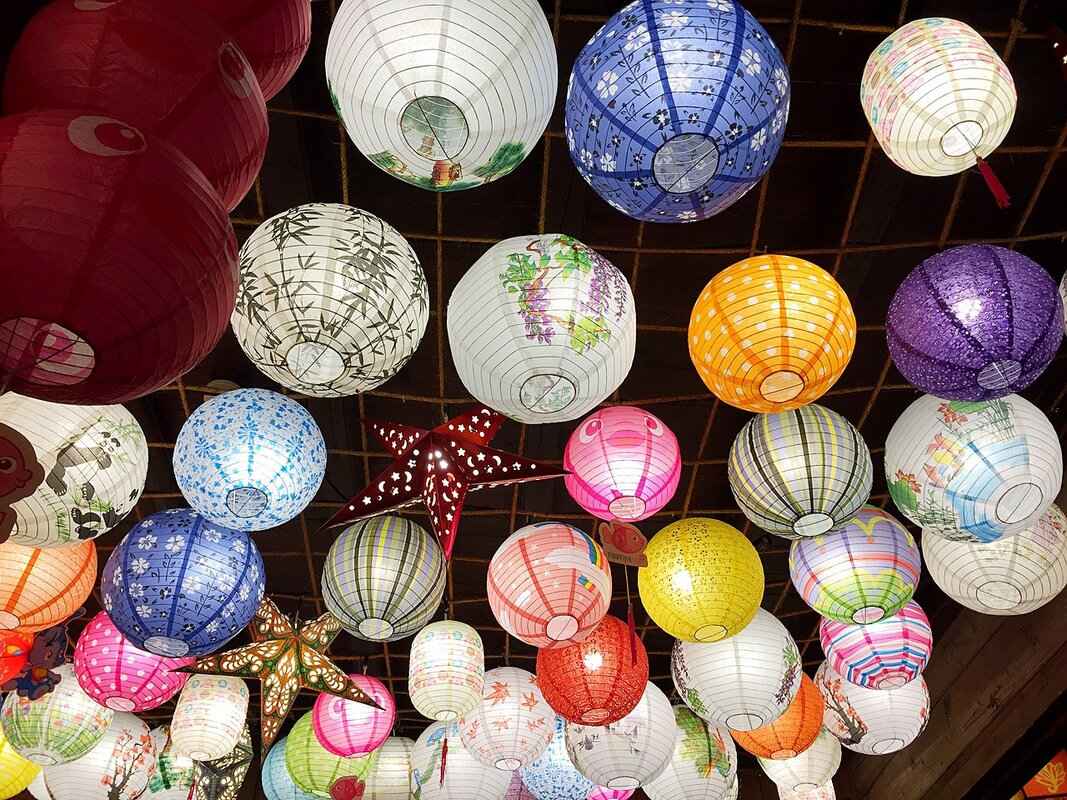
Health Benefits of Dongzhi Foods
The Dongzhi Festival, also known as the Winter Solstice, is not only a time of celebration but also a moment to reflect on the health benefits associated with traditional foods consumed during this significant occasion. These foods, deeply rooted in cultural heritage, embody the principles of traditional Chinese medicine and dietary practices, offering both nourishment and wellness.
The foods enjoyed during Dongzhi are carefully chosen for their nutritional value and health benefits. This festival emphasizes the importance of consuming foods that not only satisfy hunger but also enhance overall well-being. Here are some key health benefits of popular Dongzhi foods:
- Energy Boosting Properties: Foods like Tangyuan and Jiaozi are rich in carbohydrates, providing a quick source of energy, which is particularly beneficial during the cold winter months.
- Digestive Health: The glutinous rice used in Tangyuan is easy to digest, making it suitable for individuals of all ages. Its gentle nature supports digestive health, especially during winter when heavier foods are more common.
- Nutrient-Rich Fillings: Dumplings often contain a variety of fillings, including vegetables and meats, which contribute essential vitamins and minerals. This variety ensures a balanced intake of nutrients.
- Warmth and Comfort: The warm, hearty nature of Dongzhi foods like dumplings helps maintain body temperature, promoting comfort and health during the colder months.
Many ingredients used in Dongzhi foods are celebrated for their health benefits:
| Ingredient | Health Benefits |
|---|---|
| Glutinous Rice | Rich in carbohydrates, provides energy, and is easy to digest. |
| Black Sesame Paste | High in calcium and healthy fats, supports bone health. |
| Vegetables (e.g., cabbage, carrots) | Rich in vitamins and minerals, boosts immunity. |
| Meat (e.g., pork, chicken) | Provides essential proteins for muscle health and repair. |
Indeed, the foods consumed during Dongzhi can play a crucial role in supporting seasonal wellness. Traditional Chinese medicine emphasizes the importance of eating according to the seasons, and Dongzhi foods are designed to:
- Strengthen the Immune System: Ingredients rich in vitamins and minerals help bolster the body’s defenses against winter illnesses.
- Promote Blood Circulation: Warm foods enhance blood flow, which is vital during colder months when circulation can be compromised.
- Balance Yin and Yang: The concept of Yin and Yang is central to Chinese dietary practices. The warm, hearty foods consumed during Dongzhi help balance the body’s energies during the winter season.
As culinary practices evolve, many families are adapting traditional Dongzhi foods to enhance their health benefits. For instance, incorporating whole grains or adding more vegetables to dumpling fillings can increase their nutritional value. Additionally, modern chefs are experimenting with gluten-free options for those with dietary restrictions, ensuring that everyone can partake in the celebrations without compromising their health.
In summary, the foods consumed during Dongzhi not only celebrate rich cultural traditions but also provide significant health benefits. By embracing these traditional dishes, families can enjoy a festive atmosphere while promoting wellness and vitality during the winter season.
Nutritional Value of Tangyuan
Tangyuan, also known as glutinous rice balls, hold a special place in Chinese culinary traditions, especially during the Winter Solstice festival, or Dongzhi. These delightful treats are not only delicious but also packed with nutritional benefits that contribute to a balanced diet during the colder months.
At the core of Tangyuan’s composition is glutinous rice, a key ingredient that plays a vital role in providing energy. This type of rice is known for its high carbohydrate content, making it an excellent source of fuel for the body. The energy from glutinous rice is easily digestible, making Tangyuan a suitable option for people of all ages, including children and the elderly.
One of the most appealing aspects of Tangyuan is the variety of fillings that can be used. Common fillings include:
- Black Sesame Paste: Rich in calcium and healthy fats, black sesame seeds are known for their antioxidant properties.
- Red Bean Paste: High in protein and fiber, red beans contribute to digestive health and provide a sweet yet nutritious option.
- Peanut Paste: Packed with protein and healthy oils, peanut paste adds a creamy texture and enhances the overall flavor.
Each of these fillings not only adds flavor but also boosts the overall nutritional profile of Tangyuan, ensuring that they are more than just a festive treat.
During the winter months, our bodies require more energy to maintain warmth and support immune function. The combination of glutinous rice and wholesome fillings in Tangyuan provides a balanced approach to nutrition. The carbohydrates from the rice offer quick energy, while the fillings introduce essential nutrients that support overall health.
In traditional Chinese medicine, foods are often categorized based on their warming or cooling properties. Tangyuan, being warm in nature, is believed to be beneficial during the cold winter months. This aligns with the principles of maintaining balance in the body, especially when external temperatures drop.
Modern dietary trends also recognize the importance of incorporating whole foods into our diets. By making Tangyuan with natural and minimally processed ingredients, families can enjoy a treat that aligns with contemporary health guidelines while honoring their cultural heritage.
While Tangyuan is traditionally associated with Dongzhi, their nutritional value makes them a great option year-round. Here are some ways to enjoy Tangyuan:
- As a dessert after meals, offering a sweet and satisfying end to the dining experience.
- In soups, where they can be served in a light broth, enhancing the dish’s warmth and comfort.
- As a part of celebrations for other festivals, emphasizing family unity and togetherness.
In summary, Tangyuan is not just a festive food; it is a nutritious option that contributes to a balanced diet, especially during the winter months. With their energy-boosting properties and diverse fillings, Tangyuan encapsulates the essence of health and tradition, making them a beloved dish in Chinese culture.
The Role of Dumplings in Winter Nutrition
Dumplings, known as jiaozi in Mandarin, hold a special place in the hearts and kitchens of many Chinese families, especially during the winter season. These delightful pockets of flavor are not just a treat for the taste buds; they also offer a range of nutritional benefits that are particularly valuable during the colder months. In this section, we will explore the various aspects of dumplings and their role in winter nutrition.
Dumplings are typically filled with a variety of ingredients, predominantly meat and vegetables. This combination provides essential proteins and vitamins, making them a wholesome meal option. The protein content is crucial for maintaining muscle health and supporting the immune system, especially during winter when colds and flu are more common.
The warm, hearty nature of dumplings makes them particularly appealing during the winter months. Their comforting warmth not only satisfies hunger but also helps to warm the body from the inside out. This is especially important in traditional Chinese medicine, where maintaining the body’s warmth is believed to promote overall health and well-being.
- Meat Fillings: Commonly used meats like pork, beef, and chicken provide high-quality protein, essential for energy and muscle repair.
- Vegetable Fillings: Ingredients such as cabbage, carrots, and mushrooms add fiber, vitamins, and minerals, contributing to a balanced diet.
- Herbs and Spices: Many dumpling recipes incorporate ginger and garlic, known for their immune-boosting properties.
Incorporating dumplings into your winter diet can be a delicious way to ensure you are receiving adequate nutrition. They can be paired with broths or soups, enhancing hydration and providing additional nutrients. For those looking to maintain a balanced diet, dumplings can be made with whole wheat or alternative flours, increasing their fiber content.
Indeed, dumplings can be tailored to meet various dietary preferences. For those who are vegetarian or vegan, fillings can be made from a variety of legumes, tofu, and an array of vegetables. Gluten-free options are also available, utilizing rice flour or other gluten-free alternatives to cater to those with dietary restrictions.
Dumplings play a significant role in winter nutrition, providing essential nutrients while offering a comforting meal option during the cold months. Their versatility allows for numerous variations, making them suitable for nearly every dietary preference. Whether enjoyed at family gatherings or prepared at home, dumplings remain a beloved staple that nourishes both body and soul.
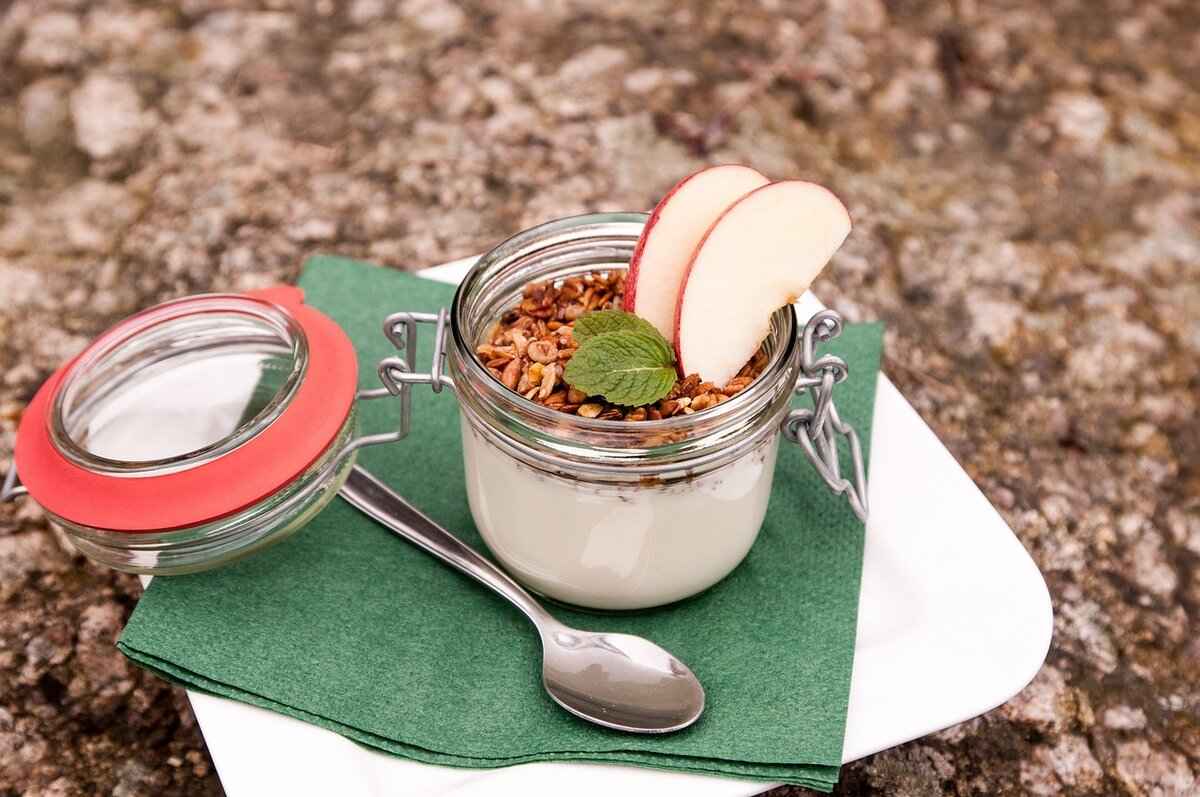
Modern Interpretations of Dongzhi Foods
The celebration of Dongzhi, or the Winter Solstice Festival, is deeply rooted in Chinese culture, and its associated foods carry profound meanings. As we observe this festival, we notice that the traditional dishes are being reimagined and transformed by modern chefs and home cooks alike. This evolution reflects a blend of heritage and innovation, showcasing the dynamic nature of culinary practices.
As society evolves, so do the interpretations of traditional Dongzhi foods. Modern chefs are creatively experimenting with flavors and presentations, merging time-honored recipes with contemporary culinary trends. This fusion not only appeals to younger generations but also invites a broader audience to appreciate the rich cultural heritage associated with these dishes.
- Gourmet Tangyuan: Chefs are introducing unique fillings such as matcha, chocolate, and fruit purees into glutinous rice balls. These modern tangyuan are not only visually stunning but also cater to diverse palates.
- Artisan Dumplings: Traditional jiaozi are being reimagined with global influences, incorporating ingredients like feta cheese, spinach, or even vegan options, making them more inclusive.
- Fusion Soups: Some cooks are creating innovative soups that combine traditional broths with international spices, enhancing flavor profiles while retaining cultural significance.
Despite the modern twists, many families continue to prioritize traditional recipes during Dongzhi. This commitment to preserving cultural heritage is crucial as it fosters a sense of identity and community. The act of preparing and sharing these dishes connects generations, allowing family members to pass down stories and customs associated with each recipe.
Modern cooking techniques, such as sous-vide and molecular gastronomy, are being utilized to enhance the textures and flavors of traditional Dongzhi dishes. For instance, sous-vide cooking can ensure that dumplings are perfectly cooked, retaining moisture and flavor without compromising their traditional essence.
In today’s culinary landscape, presentation has become just as important as taste. Chefs are focusing on aesthetically pleasing plating that reflects the festive spirit of Dongzhi. Using vibrant colors and artistic arrangements, they create dishes that are not only delicious but also visually captivating, making them perfect for social media sharing and family gatherings.
Home cooks are also embracing modern interpretations of Dongzhi foods. Many are experimenting with local ingredients or dietary preferences, such as gluten-free or vegan alternatives, making traditional recipes more accessible. This adaptability allows families to celebrate Dongzhi in a way that resonates with their individual lifestyles while honoring their cultural roots.
The future of Dongzhi foods appears bright as culinary innovation continues to thrive. With an increasing interest in cultural exchanges, we can expect to see more cross-cultural influences in traditional dishes. As chefs and home cooks alike embrace creativity while respecting the past, Dongzhi foods will undoubtedly evolve, ensuring that this cherished festival remains relevant for generations to come.
Fusion Recipes for Dongzhi
As the culinary landscape evolves, the traditional foods associated with the Chinese Winter Solstice (Dongzhi) are experiencing a remarkable transformation. One of the most exciting developments is the rise of fusion recipes that blend international flavors with classic Dongzhi dishes. This trend not only appeals to the younger generations but also expands the festival’s reach beyond its traditional roots.
Fusion recipes for Dongzhi involve the combination of traditional Chinese ingredients and cooking methods with flavors and techniques from other cultures around the world. This culinary innovation creates unique dishes that celebrate the spirit of Dongzhi while introducing new taste sensations. For example, one might find glutinous rice balls filled with matcha or mango, or dumplings infused with Italian herbs and cheese.
- Appeal to Younger Generations: Younger people are increasingly interested in trying new flavors and experiences. Fusion recipes provide a fresh take on traditional dishes, making them more appealing.
- Globalization: As cultures intermingle through travel and technology, culinary boundaries blur, leading to innovative cooking styles that reflect a global palate.
- Creative Expression: Chefs and home cooks enjoy the freedom to experiment with flavors, allowing for personal expression while still honoring tradition.
Here are some exciting fusion recipes that have emerged in recent years:
- Spicy Kimchi Dumplings: These dumplings combine traditional jiaozi with spicy kimchi, offering a delightful kick that enhances the original flavor.
- Matcha Tangyuan: Incorporating matcha powder into the dough for glutinous rice balls not only adds a vibrant color but also infuses a unique flavor that complements the traditional sweet fillings.
- Tex-Mex Dumplings: Filled with ingredients like black beans, corn, and cheese, these dumplings bring a taste of Mexico to the Dongzhi table, creating a fun twist on a classic.
Creating fusion dishes for Dongzhi can be a fun and rewarding experience. Here are some tips to get you started:
1. Choose a traditional Dongzhi dish as your base.2. Select an international cuisine that you enjoy.3. Experiment with flavors by incorporating ingredients from the chosen cuisine.4. Maintain the essence of the original dish while adding your unique twist.5. Share your creations with family and friends during the festival!
As fusion recipes continue to gain traction, the way Dongzhi is celebrated will likely evolve. While traditional foods will always hold a special place in the hearts of many, the introduction of innovative dishes can enrich the festival experience, making it more inclusive and diverse.
In conclusion, the blending of international flavors with traditional Dongzhi foods represents a dynamic shift in culinary practices. This trend not only honors the past but also embraces the future, ensuring that the festival remains relevant and exciting for generations to come.
Preserving Tradition in a Modern World
In today’s fast-paced society, the celebration of Dongzhi, or the Winter Solstice Festival, remains a cherished tradition for many families. While modern adaptations of culinary practices are becoming increasingly popular, a significant number of households still prioritize traditional recipes, ensuring that their cultural heritage is not lost. This blend of tradition and innovation allows for both creativity and personal expression in the kitchen, as families navigate the complexities of contemporary life.
One of the most important aspects of Dongzhi is the food that is prepared and shared among family members. Traditional dishes such as Tangyuan and Jiaozi are not merely meals; they are symbols of unity, prosperity, and health. The round shape of Tangyuan, for instance, represents family togetherness, while dumplings symbolize wealth. These dishes serve as a reminder of the values that are passed down through generations.
Despite the pressures of modern life, many families find ways to incorporate traditional recipes into their celebrations. For example, while some may opt for pre-made ingredients or fusion variations, others invest time in making Tangyuan from scratch, using recipes that have been handed down from their grandparents. This practice not only strengthens family bonds but also fosters a sense of identity and belonging.
Moreover, the act of cooking together during Dongzhi is a cherished ritual. Families gather in the kitchen, sharing stories and laughter while preparing their meals. This communal experience reinforces the importance of family ties and creates lasting memories. As families experiment with new flavors or presentations, they also share these innovations with older generations, creating a dialogue between the past and the present.
Interestingly, the modern culinary landscape has seen the emergence of fusion recipes that blend traditional Dongzhi foods with international flavors. For instance, some families might add unique fillings to their dumplings or incorporate modern cooking techniques to enhance the traditional methods. This evolution reflects the dynamic nature of culture, where traditions are not merely preserved but are also adapted to fit the contemporary palate.
However, the essence of Dongzhi remains rooted in its traditions. The importance of gathering around the table, sharing a meal, and celebrating the return of longer days is a sentiment that resonates deeply with families, regardless of how they choose to prepare their dishes. By prioritizing traditional recipes, families are not only honoring their ancestors but also ensuring that future generations understand the significance of their cultural heritage.
In conclusion, the balance between tradition and modernity is a delicate one. While many families embrace new culinary trends, the value of traditional recipes during Dongzhi cannot be overstated. These dishes serve as a bridge between generations, allowing families to celebrate their history while also exploring new culinary horizons. As we continue to navigate a rapidly changing world, the preservation of these traditions will remain essential in fostering a sense of cultural identity and familial connection.
Frequently Asked Questions
- What is the significance of Dongzhi?
Dongzhi, or the Winter Solstice Festival, is a celebration that marks the shortest day of the year in Chinese culture. It symbolizes the return of longer days and the hope for spring, bringing families together to celebrate.
- What traditional foods are commonly eaten during Dongzhi?
During Dongzhi, families often enjoy glutinous rice balls (Tangyuan) and dumplings (Jiaozi). Tangyuan represents family unity, while dumplings symbolize wealth and prosperity, making them essential for festive gatherings.
- Are there regional variations in Dongzhi foods?
Yes! Different regions in China have unique foods for Dongzhi. For instance, southern China favors glutinous rice balls, while northern regions typically enjoy dumplings. These variations reflect local customs and agricultural practices.
- What health benefits do Dongzhi foods offer?
Dongzhi foods like Tangyuan and dumplings are not only delicious but also nutritious. Tangyuan provides energy and is easy to digest, while dumplings, filled with meat and vegetables, offer essential proteins and vitamins, perfect for winter nutrition.
- How are modern interpretations of Dongzhi foods changing?
Modern chefs and home cooks are blending traditional Dongzhi recipes with international flavors, creating fusion dishes that appeal to younger generations. However, many families still cherish traditional recipes, ensuring cultural heritage remains alive.

